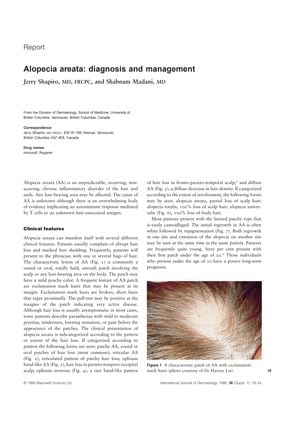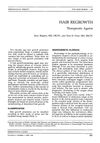Alopecia areata: diagnosis and management
May 1999
in “
International Journal of Dermatology
”

TLDR Alopecia areata is an unpredictable autoimmune hair loss condition, treated based on severity, with half of patients regrowing hair within a year without treatment.
In 1999, Alopecia areata (AA) was recognized as a chronic inflammatory disorder that leads to unpredictable hair loss and is considered to be autoimmune. It presents as sudden hair loss with round or oval bald patches and may be accompanied by nail dystrophy. AA can range from small patches to complete body hair loss, known as alopecia universalis, and may occur alongside other autoimmune diseases. The prognosis for AA is uncertain, with half of the patients experiencing hair regrowth within a year without treatment, though some cases become chronic and severe. Diagnosis is made by differentiating from conditions like telogen effluvium and androgenetic alopecia. Treatment, which is palliative, varies based on the severity of hair loss and includes intralesional corticosteroids, minoxidil 5%, and topical immunotherapy for less extensive cases, and topical immunotherapy, systemic PUVA, and minoxidil for more severe cases. Systemic corticosteroids are generally avoided due to their side effects. Addressing the psychological impact of AA is important, with organizations like the National Alopecia Areata Foundation offering support.


